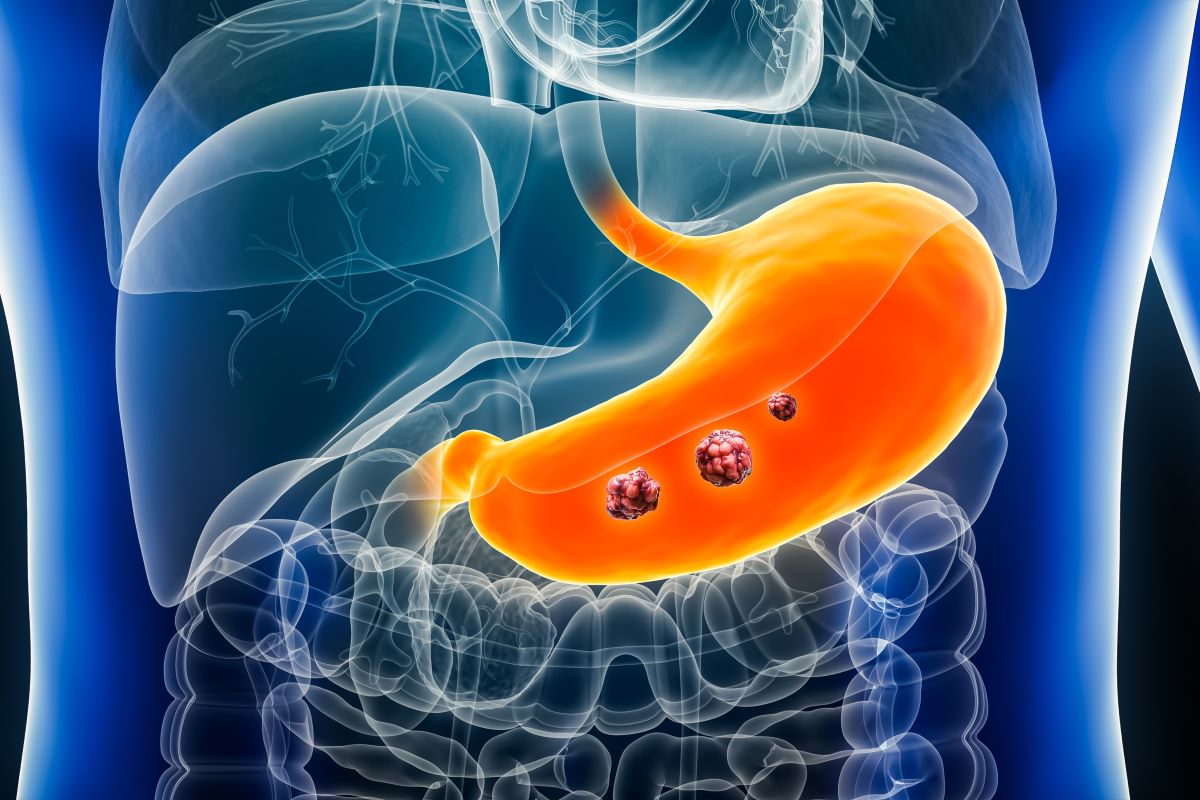
For a family medicine physician, internist or emergency room doctor, nonspecific complaints such as abdominal pain and indigestion are common and frequently have benign causes. Rarely, however, these and other subtle symptoms can be the first sign of gastric cancer, a disease less highlighted in the American popular media yet nonetheless an often aggressive malignancy.
The incidence of gastric cancer in rising in the West, particularly in patients under 50 years of age. It is the fourth leading cause of cancer deaths in the world. Risk factors include environmental agents such as chronic infection with Helicobacter pylori, dietary consumption of salt and nitrosamines, obesity, smoking and alcohol. Underlying pathology such as atrophic gastritis and intestinal metaplasia may also contribute to patients with intestinal type histology. While prior gastric surgery is felt to add some risk, a large nationwide cohort study recently demonstrated that bariatric surgery is actually associated with a reduction of gastroesophageal cancer incidence. As the gastric remnant will be inaccessible for endoscopic surveillance, attention to this region on subsequent axial imaging is paramount in patients with gastrointestinal symptoms. Diffuse type gastric cancer, manifested by the classic linitis plastica or “leather bottle” appearance of the entire stomach, may occur within the context of hereditary syndromes including CDH1 mutations or de novo, may be subtle on imaging and endoscopy, but have a worse prognosis.
Due to the overall low incidence in the West, there are currently no national guidelines to support screening endoscopy in healthy adults. As a result, here gastric cancer often presents in the locally advanced or metastatic setting. Patients may complain of abdominal discomfort, decreased oral intake, weight loss and anemia or rarely with frank hematemesis or melena. Initial workup should include assessment of nutrition and performance status, endoscopy with tissue diagnosis and computed tomography of the chest, abdomen, pelvis with intravenous contrast. This will rapidly sort patients into anticipated early, locally advanced or metastatic disease. Positron emission tomography can be a useful tool for comparison during the course of treatment and to exclude potential metastatic lesions that could be percutaneously biopsied. For those without obvious radiographic metastatic disease, a baseline endoscopic ultrasound is critical to locate the primary lesion with respect to the gastroesophageal junction, evaluate for surrounding linitis plastica, identify the depth of invasion and assess for occult nodal involvement. Finally, because synchronous peritoneal metastases are present in up to 20% of patients on presentation, staging laparoscopy at the time of diagnosis is required to identify patients who are poor candidates for surgical resection but better served by expanded systemic therapy options including immunotherapy.
Discussion of cases at a robust multidisciplinary tumor board is strong encouraged for optimal treatment planning. Very early gastric cancer (Tis or cT1a) with favorable characteristics may be amenable to endoscopic resection alone with close surveillance. Surgical resection is the mainstay of treatment for those rare patients with T1a or T1b tumors with no other disease noted. The majority of patients present with T2 or greater or N1 disease. These are excellent candidates for perioperative chemotherapy, first established as the standard of care by the MAGIC trial in 2006 and updated to the current standard of the four-drug “FLOT” regimen comprised of fluorouracil, leucovorin, oxaliplatin and docetaxel, with four cycles given before and after curative intent gastrectomy.
Robotic total and distal gastrectomy is a highlight of the complex surgical oncology program at Northside Hospital Cancer Institute. Surgery involves subtotal or distal gastrectomy for gastric body and antral cancers or total gastrectomy for proximal cancers of the cardia, fundus or proximal lesser curvature, with resection of all locoregional perigastric lymph nodes. A minimally invasive approach is preferred if feasible, particularly with the advent of robotic surgery which allows better visualization of tissue planes and control of laparoscopic instruments. Extent of nodal dissection has been debated for many decades; current consensus suggests that a modified “D2” or extended nodal harvest to include the celiac, hepatic, splenic and left gastric artery stations is associated with decreased gastric cancer specific survival. Frequent imaging surveillance is critical following completion of perioperative chemotherapy and surgery.
Within the last two years, a combination of systemic therapy, immune checkpoint inhibitors such as pembrolizumab and nivolumab and HER2 receptor targeted therapy have emerged as new personalized options for advanced gastric cancer. Patients with HER2 overexpression are candidates for fluorouracil with oxaliplatin or cisplastin and trastuzumab and/or pembrolizumab. The benefit of adding targeted agent for HER2 was demonstrated in the ToGA trial. HER2 negative patients with PD-L1 CPS ≥ 5 should receive fluorouracil, oxaliplatin and nivolumab based on the results of Checkmate-649 which showed overall survival benefit of 14.4 months with this regimen compared to 11.1 months with chemotherapy alone. Patients who lack HER2 expression and have low PD-L1 expression may be candidates for immunotherapy as well, but data for a survival benefit is less robust. All patients with high microsatellite instability or deficient mismatch repair protein expression should be considered for immunotherapy since the first ever disease site-agnostic FDA approval of pembrolizumab in 2017. Those with high tumor mutational burden should also be considered for immunotherapy, based on KEYNOTE-158. More recently, data from the SPOTLIGHT and GLOW trials showed that identification of the nearly 40% of gastroesophageal junction and gastric cancer patients who have tumors expressing a variant of claudin 18 can improve outcomes, as adding the monoclonal antibody zolbetuximab to standard chemotherapy is associated with increased survival.
Rarely, highly selected patients with very limited metastatic disease and a durable response to systemic therapy may be candidates for subsequent debulking surgery and infusion of hyperthermic intraperitoneal chemotherapy (HIPEC). Other patients may be candidates for palliative interventions such as robotic gastrojejunostomy or endoscopic stent placement to improve quality of life. Palliative care remains an essential component for patients with advanced gastric cancer who progress on therapy. Much work remains to help our patients with gastric cancer achieve a two-year survival milestone.
Learn more about stomach cancer treatment at Northside.

